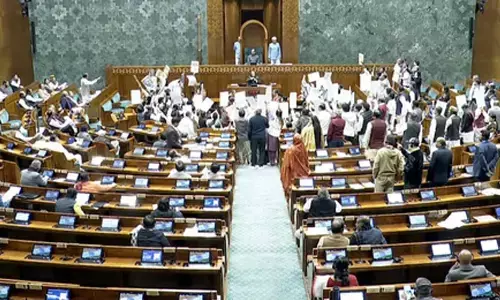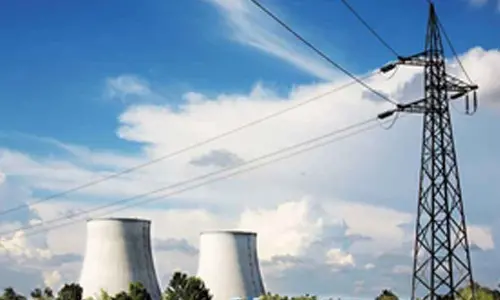Pro-minority rhetoric

Pro-Minority Rhetoric, High-Pitched Pro-Minority Rhetoric, Anser Kidwai, Minorities’ Viewpoint. The latest is the instance of the Sachar Committee which was constituted at least seven years back but its report has yet to be implemented despite the hype. Yet, its report has been revelatory, even startling, in many ways in finding the socio-economic conditions of the bulk of Muslims worse than of the Dalits – the most exploited lot and the shame of society.
The latest is the instance of the Sachar Committee which was constituted at least seven years back but its report has yet to be implemented despite the hype. Yet, its report has been revelatory, even startling, in many ways in finding the socio-economic conditions of the bulk of Muslims worse than of the Dalits – the most exploited lot and the shame of society.
The high-pitched pro-minority rhetoric may be pleasant to hear but is it all really good as it sounds? The moot point is whether given the good intentions on all hands have proved efficacious in solving the problems of the minorities or for that matter of the weaker sections during all these years. The recommendations of a host of commissions and high-level committees set up over the decades for the purpose have hardly made any tangible difference, and in most cases have been gathering dust.
The latest is the instance of the Sachar Committee which was constituted at least seven years back but its report has yet to be implemented despite the hype. Yet, its report has been revelatory, even startling, in many ways in finding the socio-economic conditions of the bulk of Muslims worse than of the Dalits – the most exploited lot and the shame of society. Its proposal on job reservations was in line with the demands of political parties but without being sweeping.
Easier it is always to pontificate but one finds all-blank as far as the minority representation in the decision-making hierarchies of the political parties. Overall it presents an unedifying picture. Starting with the Congress, a party with a glorious past, it had leaders like Maulana Azad and Rafi Ahmad Kidwai in the top slots of decision-making both in the government and the organisation. They indeed played their roles at critical junctures.
The late President, Dr Zakir Husain, was among the avant-garde to lay the base for Swadeshi education and providing a futuristic thrust in the field. The political bigwigs were followed by the likes of Fakhruddin Ali Ahmad and Mouin-ul-Haq Chowdhry, albeit the latter for a brief stint. Of course, Fakhruddin Ali Ahmad took over as the President years on but he along with Jagjivan Ram was the top two under the leadership of Indira Gandhi during her fight against the so-called “syndicate” of the Congress in the socialist ‘Seventies. What one finds now in place is a claque of spin-doctors and cheer-leaders.
The rise of regional satraps, Lalu Yadav and Mulayam Singh Yadav in particular, made the situation no better – rather it became worse. Even one may not term it as rule of dynasts, but power came to be concentrated in their single hands; one supremo and others cohorts, even may be Azam Khan in UP a possible exception. The undivided Communist Party had a few stalwarts like Comrade Muzaffar Husain, Sajjad Zaheer, K M Ashraf but none else thereafter the Socialists fared no better.
The story of the freedom struggle of course goes much back in time and begins with the saga of 1857 which was a heroic struggle of the patriotic forces with the participation of all classes and sections against colonial manoeuvres and it is a pity that the role played by the sections, now identified as Dalits, as that of the tribals went ignored by the chroniclers of the times by and large. The British were initially dismissive of its significance terming it as mere ‘Mohammeden Revolt’. It became a pace-setter for the future struggles reaching its acme in the movement formulated and modulated under Gandhiji’s leadership, and was inclusive in the real sense all. The heritage went lost with the onset of new political style.
In the present scenario, the Congress fielded less than 30 candidates for 630 seats in the five states that recently went to the polls. The representation of minorities in Parliament and the State legislatures has been invariably much short of the requisite numbers, and even showed a systematic downslide – indeed reflecting the gap between professions and deeds of the secular groupings. It would have been apt ignoring the BJP in such calculations but for its change of posture vis-à-vis the Muslims of late: yet, it ended up by putting just six Muslims into the electoral in the recent election fray. Of course, the question is linked up with the winning capacity of the candidates but even so it involves the wider question of behavioral attitude of the electorate in secular ambience, requiring convincing answers from the political class.
In fact there lies an overall problem, not of the minorities as such. The Women’s Reservations Bill is a case in point which has been hanging fire for the last many years given general goodwill on all hands. It is so in the case of caste discrimination as well. The solution does not lie in rhetoric but in sincerity of purpose which is in short supply, however.
Next Story



















